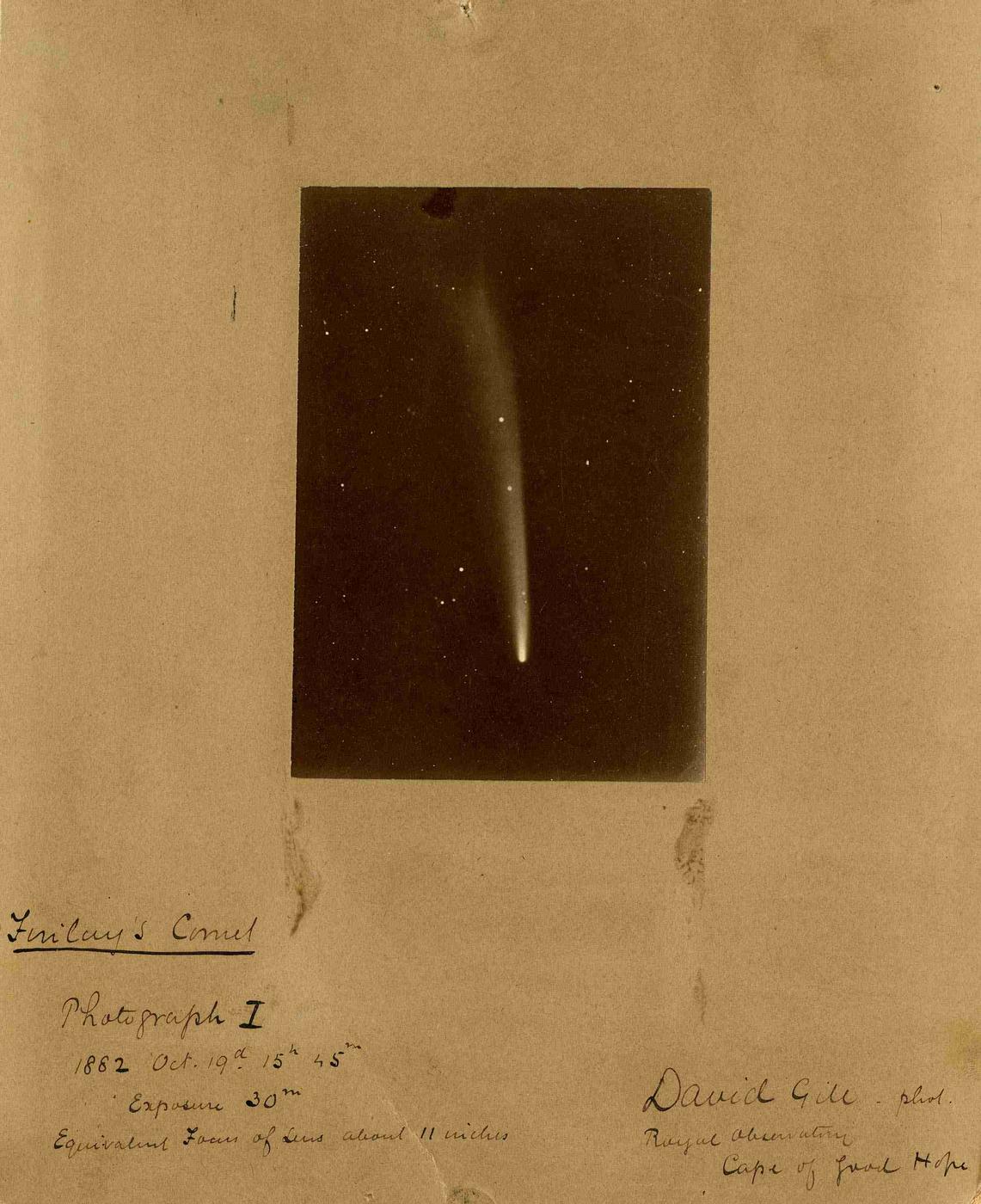On the basis of theoretical predictions, an international team led by a researcher of the Observatoire de Paris - PSL at the Institut de mécanique céleste et de calcul des éphémérides, has deployed a campaign of observations to be able to witness in the southern hemisphere the birth of a new meteor shower, originating from the comet 15P/Finlay
Outgassing of comet 15P/Finlay
Discovered in the 1880s, comet 15P/Finlay periodically returns to the Sun.

Each of its perihelion passes - the point in its orbit closest to the Sun - is accompanied by outgassing, which results in the ejection of cometary grains into the Solar System.
In 2014, the comet experienced a violent burst of activity, letting out in large quantities, thousands of grains of cometary dust.
Called "meteoroids", these dust grains evolve independently of their parent comet. They are organized in swarms, gigantic clouds that are deformed by gravitational disturbances, caused in particular by Jupiter.
The case that interests us here is exceptional ! Although comet 15P/Finlay has generated several swarms at each of its perihelion passages - most recently in 2008, then in particularly large quantities in 2014 - the Earth has never before encountered them in its orbit.
It is Jupiter that disrupted the orbit of the comet at its last passages, also causing the movement of its associated swarms. The meteoroids ejected by the comet in 2008, then in 2014 during the burst of activity, are now in the path of the Earth. By entering the Earth’s atmosphere in particularly large quantities, they have triggered a new meteor shower that could be observed for the first time on October 7, 2021.
A new name : the Arid}}
As each meteoroid enters the Earth’s atmosphere, it creates a meteor - also known as a shooting star - which appears to originate from a particular point in the sky : the radiant.
The radiant of the meteors from comet 15P/Finlay is located in the constellation of the altar : "Ara" in Latin. The meteor shower was therefore named "The Arid" (literally : from Ara). It is visible from the southern hemisphere mainly.
*The art of predicting meteor showers
Predicting a new meteor shower requires quite heavy calculations, usually performed on several processors in parallel. For the Arides, the results showed that the Earth was going to enter three meteor clouds, at the following dates :
- September 29 at 08h25 UT,
- October 7 at 00h35 UT
- October 7 at 03h55 UT.
If the time of the rains is predicted with confidence, the quantity of expected meteors is much more complex to determine. For the case of Arides, the total absence of past observations made the task even more difficult.
Moreover, the extremely low speed of entry into the atmosphere (10.8 km/s), leads to a low luminosity of the meteors, which makes the estimation of their number visible to the naked eye even more complex. The theoretical results were therefore very uncertain.
Two "MoMET" (Mobile Observation of Meteors)
In order to optimize the observation of meteor showers from any point of the globe, two "MoMET" (Mobile Observation of Meteors) suitcases, each containing 5 observation cameras, were conceived and realized, under the direction of Jérémie Vaubaillon, astronomer of the Observatoire de Paris - PSL within the IMCCE.
Equipped with these devices, two teams went to Chile and distributed on two sites about 50 km apart, one at the Mamalluca Observatory, the other at the El Sauce Observatory to triangulate the 3D trajectories and orbits of meteors.

Despite the presence of clouds, 35 meteors from the Altar constellation were recorded from the El Sauce observatory between 00:28 and 01:30 UT. Most of them were of low luminosity and a few were quite bright. During the third peak, it was noted "a few".
The Arides have also been detected around the world on other camera networks : A first expected peak was detected by the CAMS" camera network in New Zealand. Other detections took place at the University of Bratislava, Slovakia, at SETI, in Japan, in Canada (Western Meteor Group in Ontario)...
Technical details and scientific contributions
At the Observatoire de Paris - PSL, the IMCCE and the instrumental pole of the GEPI (F. Bouley, G. Fasola) have designed and realized the two "MoMET" (Mobile Observation of Meteors) cases, each containing 5 cameras for meteor observation. The PI of this instrument is J. Vaubaillon (IMCCE).
The cameras are Basler or DMK equipped with a Sony IMX174 sensor.
The control mini-computers are Odroid XU4Q or RaspBerry-pi 4.
The acquisition software is RMS (developed by the Global Meteor Network), specially designed for RaspBerry-pi.
The adaptation to the Odroids as well as the development of an interface allowing the control of the 5 cameras were carried out by P. Da Fonseca (EPITECH, internship at IMCCE).
Several test campaigns were necessary for the development of the instrument.
The active participation of K. Baillié (IMCCE), J. Desmars (IMCCE / IPSA) and S. Bouquillon (SYRTE/LFCA) have been precious for these steps.





